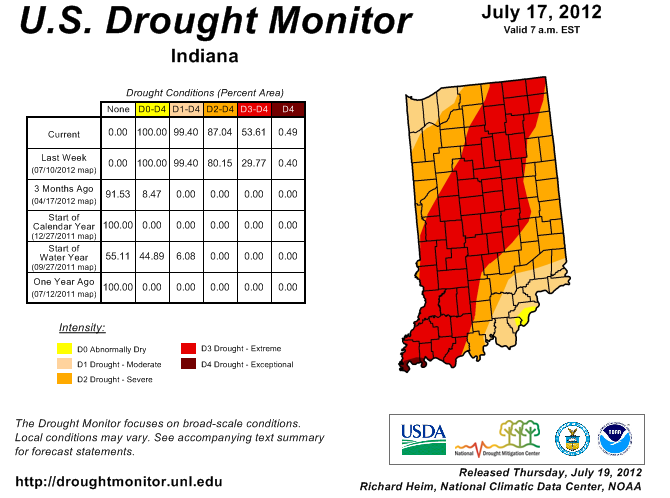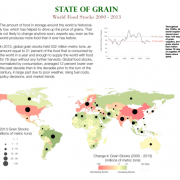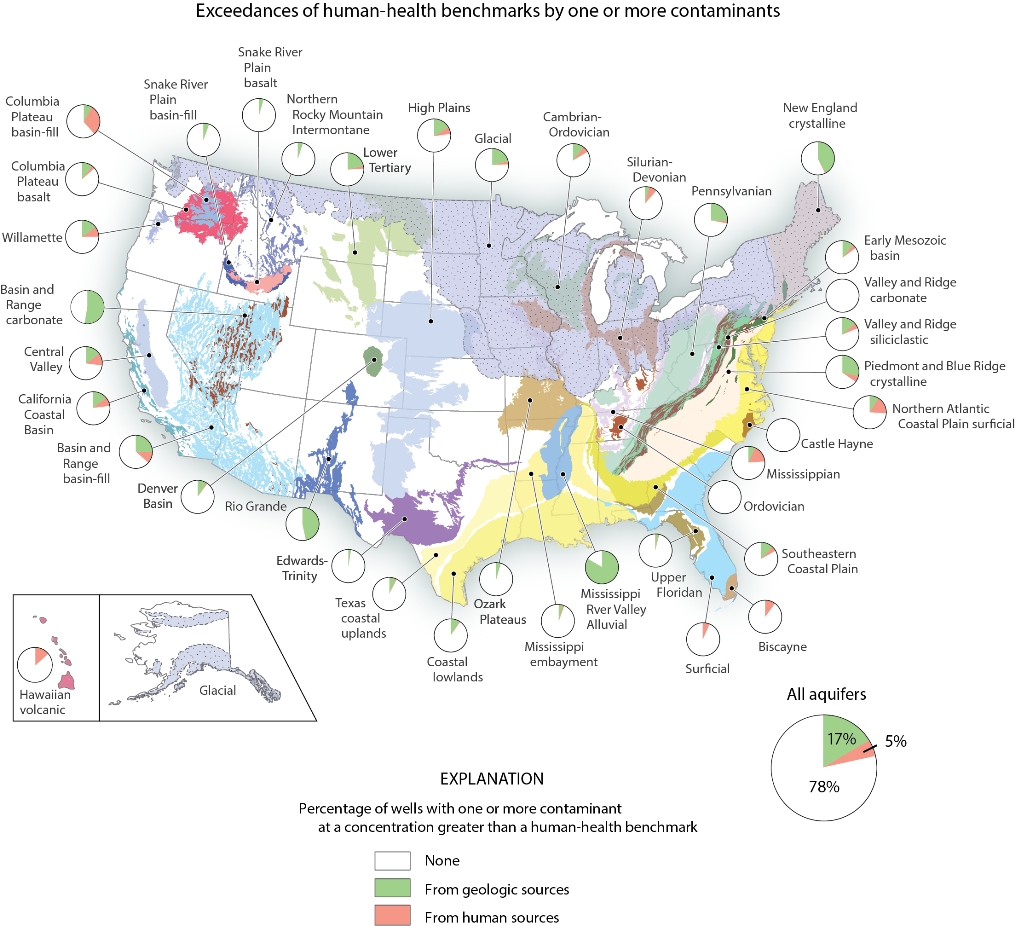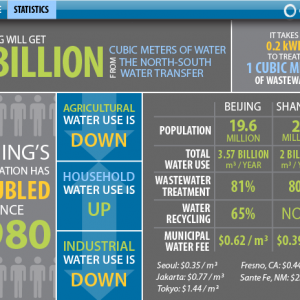With Conservation, Indiana’s Cities Cope With Drought
Indianapolis has cut water consumption by 28 percent in the last two weeks.

By Brett Walton
Circle of Blue
Indiana has a big great smear of Hoosier red covering half the state. That color swath — running from the northeast corner to the southwestern tip — indicates, per the classification system used by the U.S. Drought Monitor, an “extreme” drought, or one that occurs roughly once every 20 to 33 years.
Because of this, on July 18, Indiana’s Department of Natural Resources issued a water-shortage warning and asked facilities that withdraw large amounts of water to make voluntary reductions of 10 to 15 percent. Some cities are doing so; others say their water sources are adequate. Just one town has declared a water emergency.
“A lot of these systems are already doing things to conserve water,” said Amy Hartsock, a public information officer for the Department of Environmental Management, which asked 4,200 drinking water utilities in the state about their water supply status. As of July 16, 10 utilities reported that they might face supply or capacity problems in the near future.
–Allen Mounts
Water Department Director
Evansville, Indiana
Indiana’s drought map appears uniform — bands of autumnal color, like on a corn snake — but the consequences of persistently dry weather are anything but. Drought affects different sectors at different times and in different ways. For municipal users, the burden of drought depends on what water supply source the city uses: rivers, reservoirs, or groundwater.
Evansville, in the state’s southwest tip, has not set any restrictions. The city of 117,000 draws its water from the Ohio River, one of the nation’s largest by discharge. Allen Mounts, the water department director, told Circle of Blue that the Ohio’s size makes it a more reliable source, compared to cities that draw from smaller rivers.
“We’re continuing to monitor the situation.” he said. “But right now, things are ok.”
Restrictions
In the state capital, however, mandatory water restrictions have been in place since July 13. Indianapolis, which relies on reservoirs, has prohibited outdoor water use, except for hand-watering of vegetable gardens and flowers.
The effect has been swift and significant.
Before the restrictions, the city was using roughly 757,000 cubic meters (200 million gallons) per day. In June, all-time daily water-use records were broken — twice. Sarah Holsapple, a press officer for Citizens Energy Group, which operates the water system, said that demand is now just 541,000 cubic meters (143 million gallons) per day, a 28.5 percent reduction.
“It is safe to say that the majority of the drop in usage is due to the watering ban,” Holsapple wrote in an email.
According to the Indiana Department of Environmental Management, the only town to declare a water emergency is Osgood, 110 kilometers (70 miles) southeast of the capital. Outdoor water use there has also been banned.
–Sarah Holsapple, press officer
Citizens Energy Group
Chuck Gill, Osgood’s water superintendent, told Circle of Blue that Laughery Creek, which feeds the town’s reservoir, is running low, and the restrictions are a precautionary measure. “We have a 140- to 160-day supply in the reservoir currently,” Gill said.
Of course, this drought is quite young — only a few months old — and it comes on the heels of Indiana’s wettest year on record, so reservoirs were brimming at the start. When the dry months turn into dry years, then the real struggles could emerge. For now though, most cities enjoy a large buffer between demands and essential needs.
Lawns may wither, but the drought is not yet a municipal crisis.
“Conservation — that’s our message,” said Hartsock, of the Indiana Department of Environmental Management.
Brett writes about agriculture, energy, infrastructure, and the politics and economics of water in the United States. He also writes the Federal Water Tap, Circle of Blue’s weekly digest of U.S. government water news. He is the winner of two Society of Environmental Journalists reporting awards, one of the top honors in American environmental journalism: first place for explanatory reporting for a series on septic system pollution in the United States(2016) and third place for beat reporting in a small market (2014). He received the Sierra Club’s Distinguished Service Award in 2018. Brett lives in Seattle, where he hikes the mountains and bakes pies. Contact Brett Walton











Leave a Reply
Want to join the discussion?Feel free to contribute!